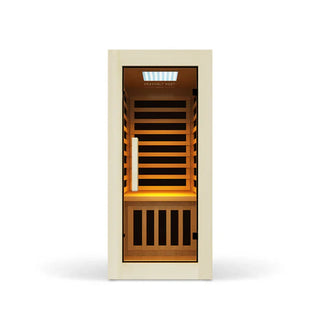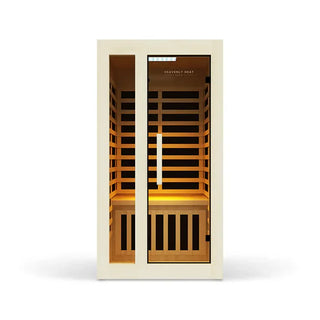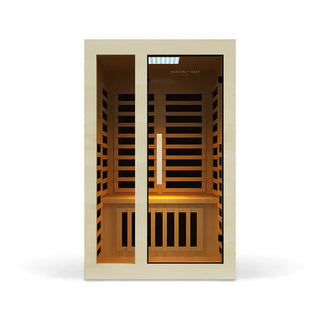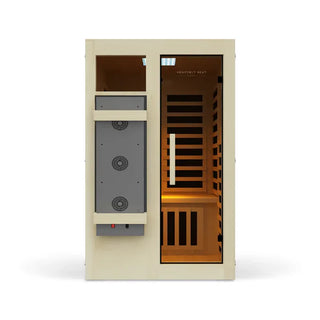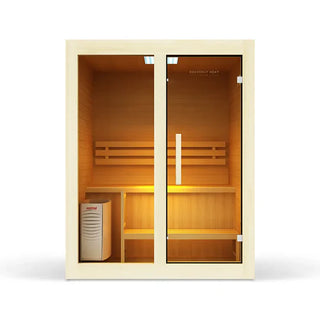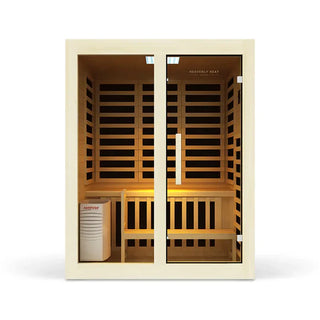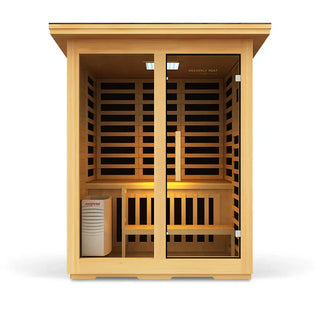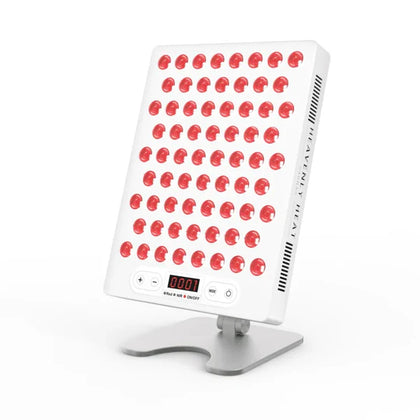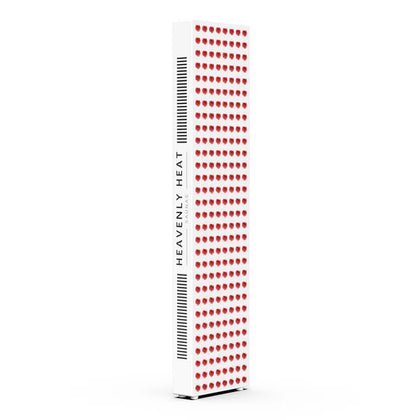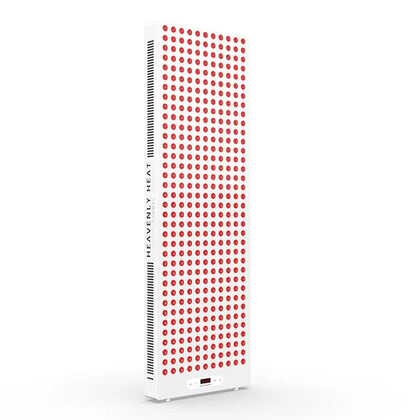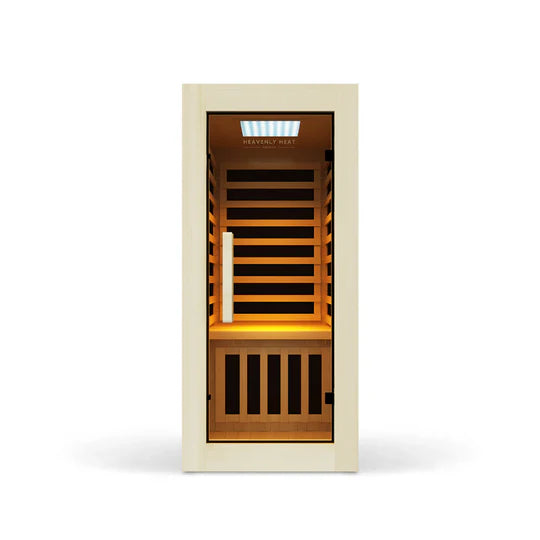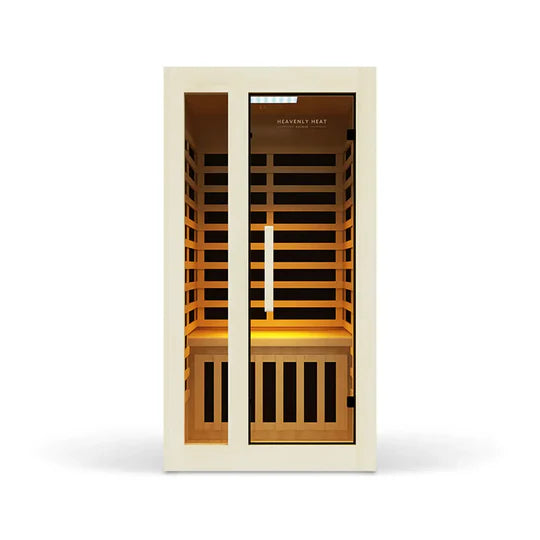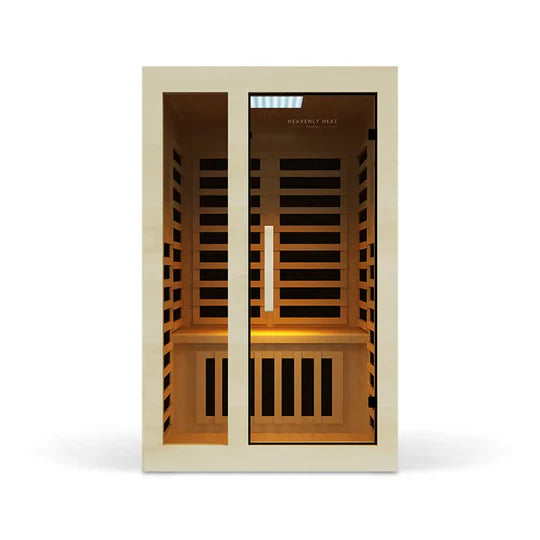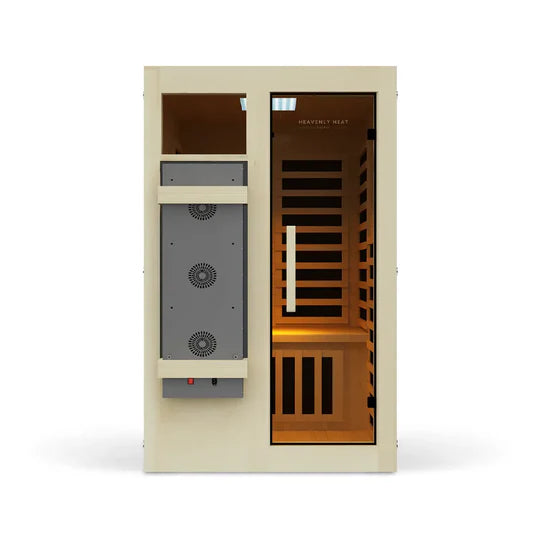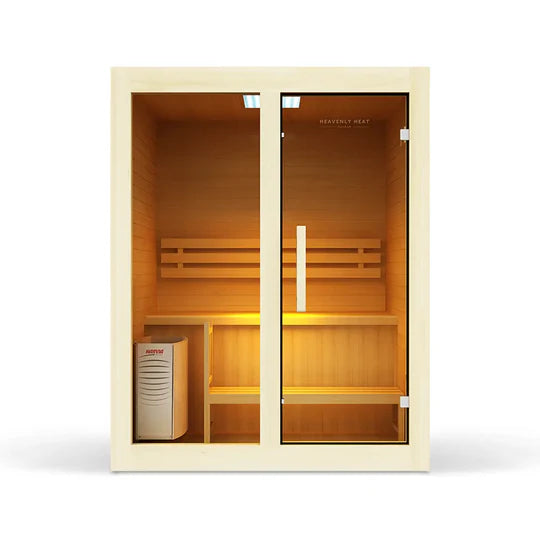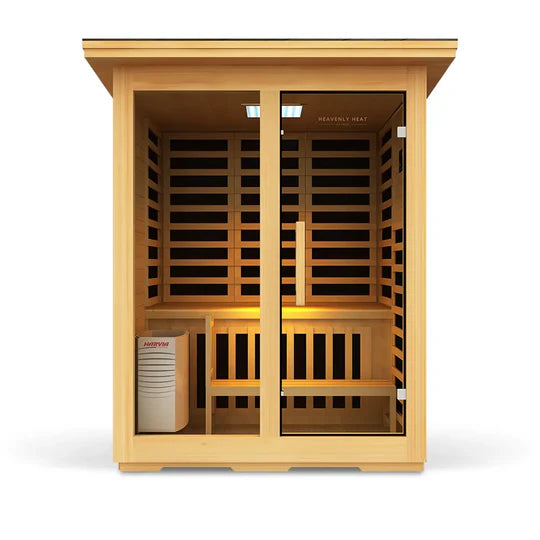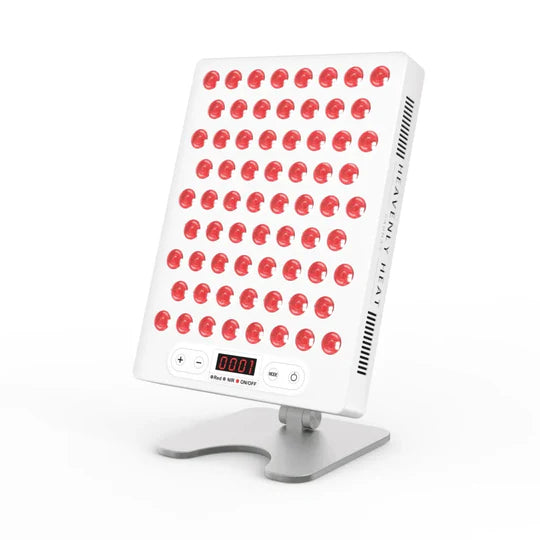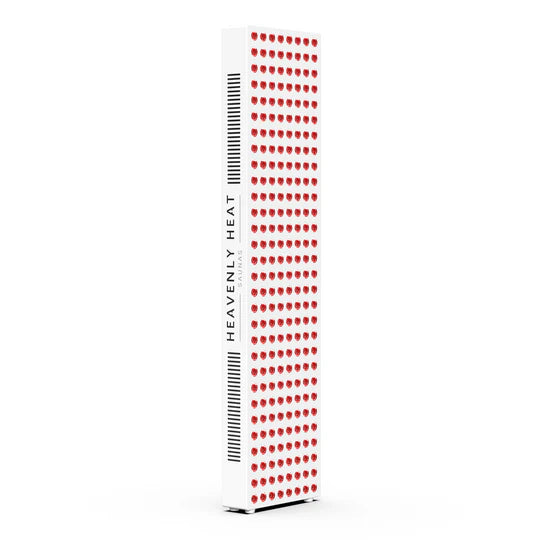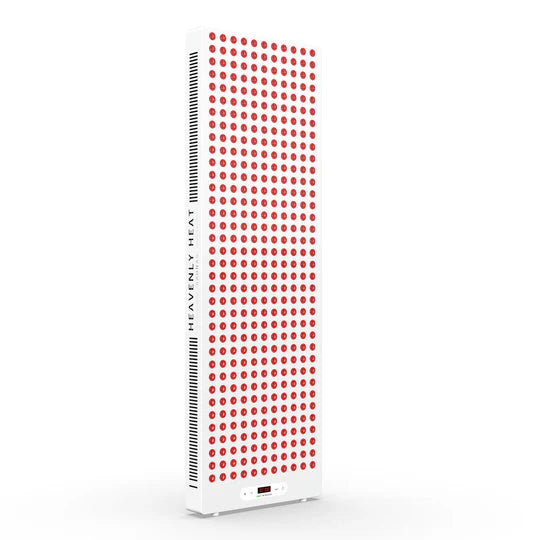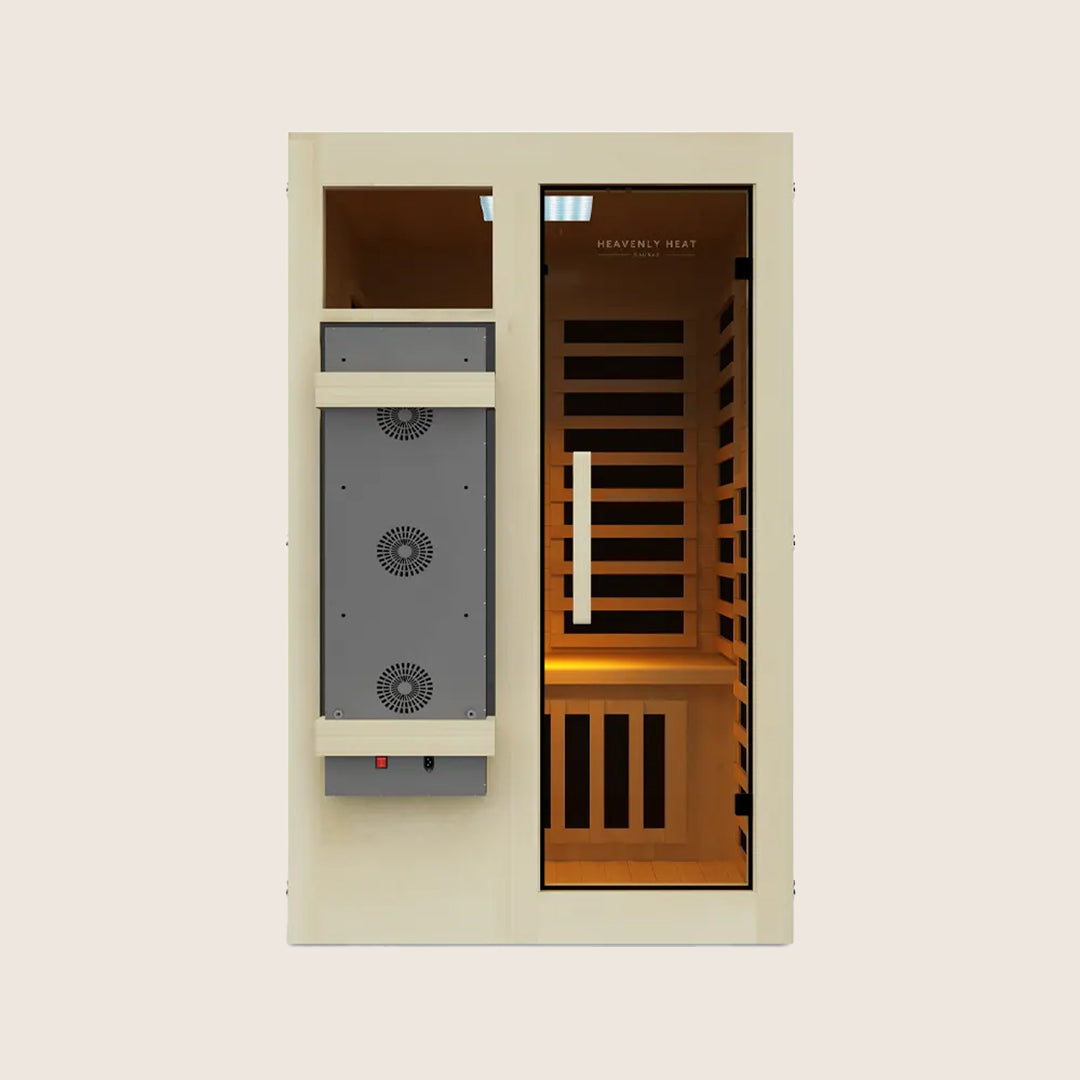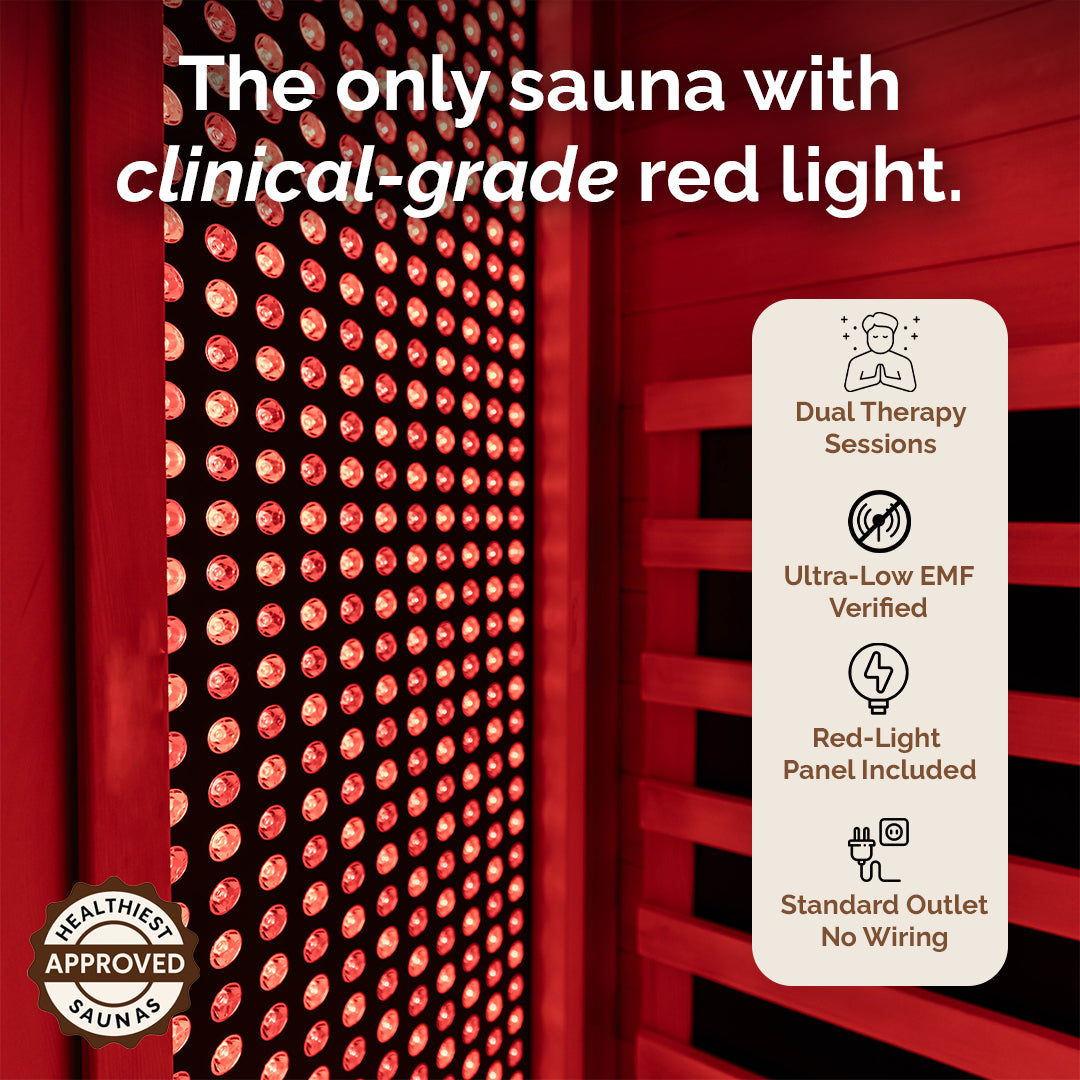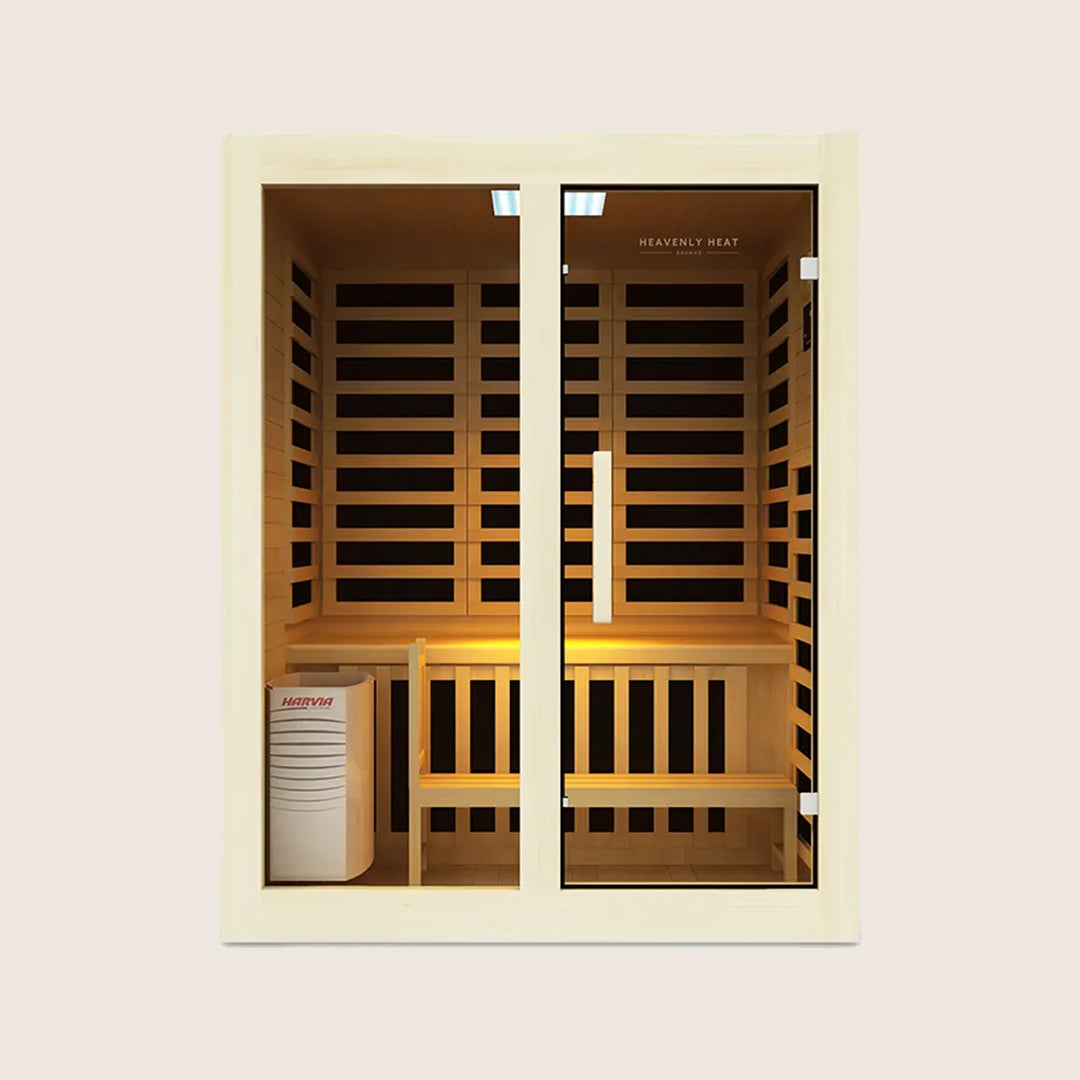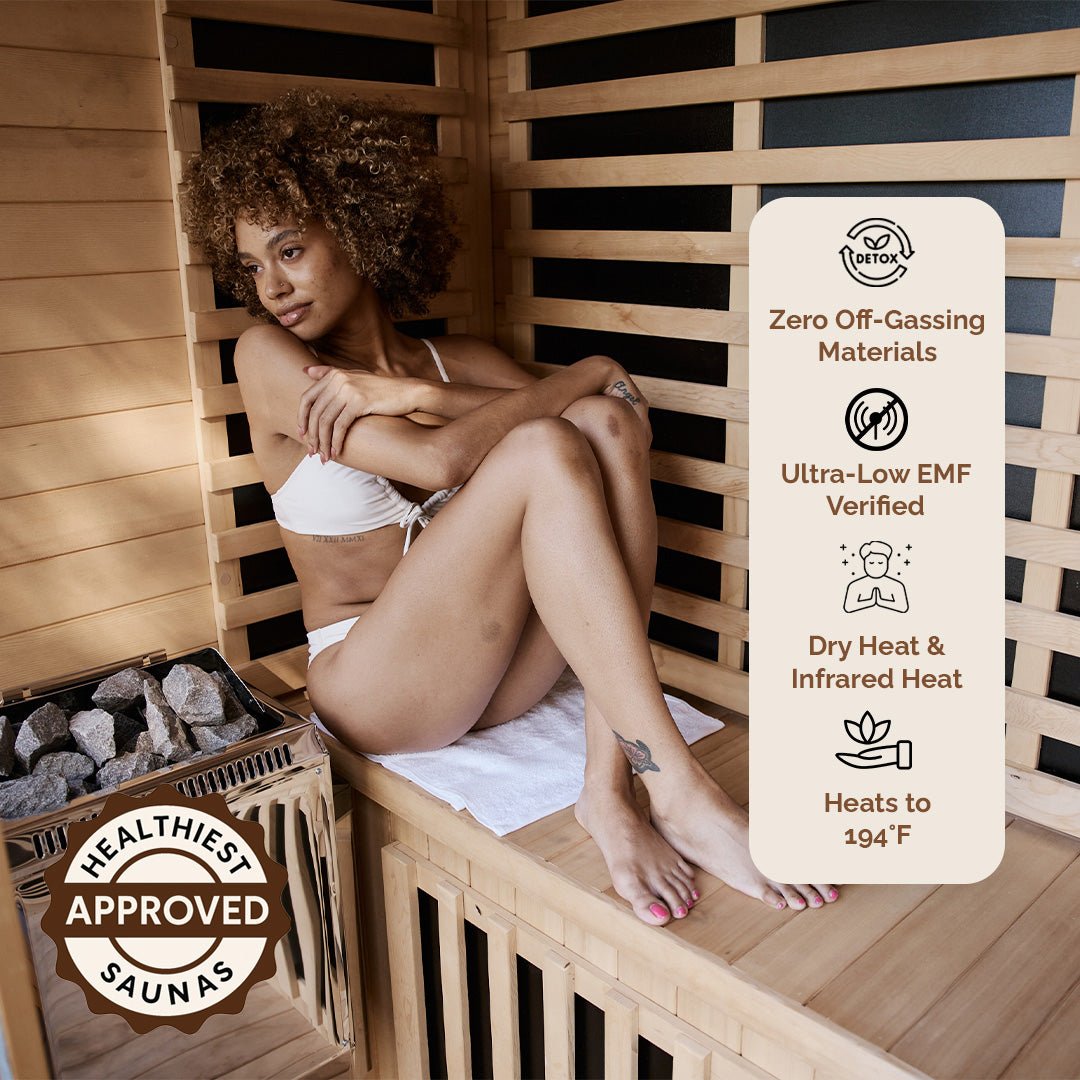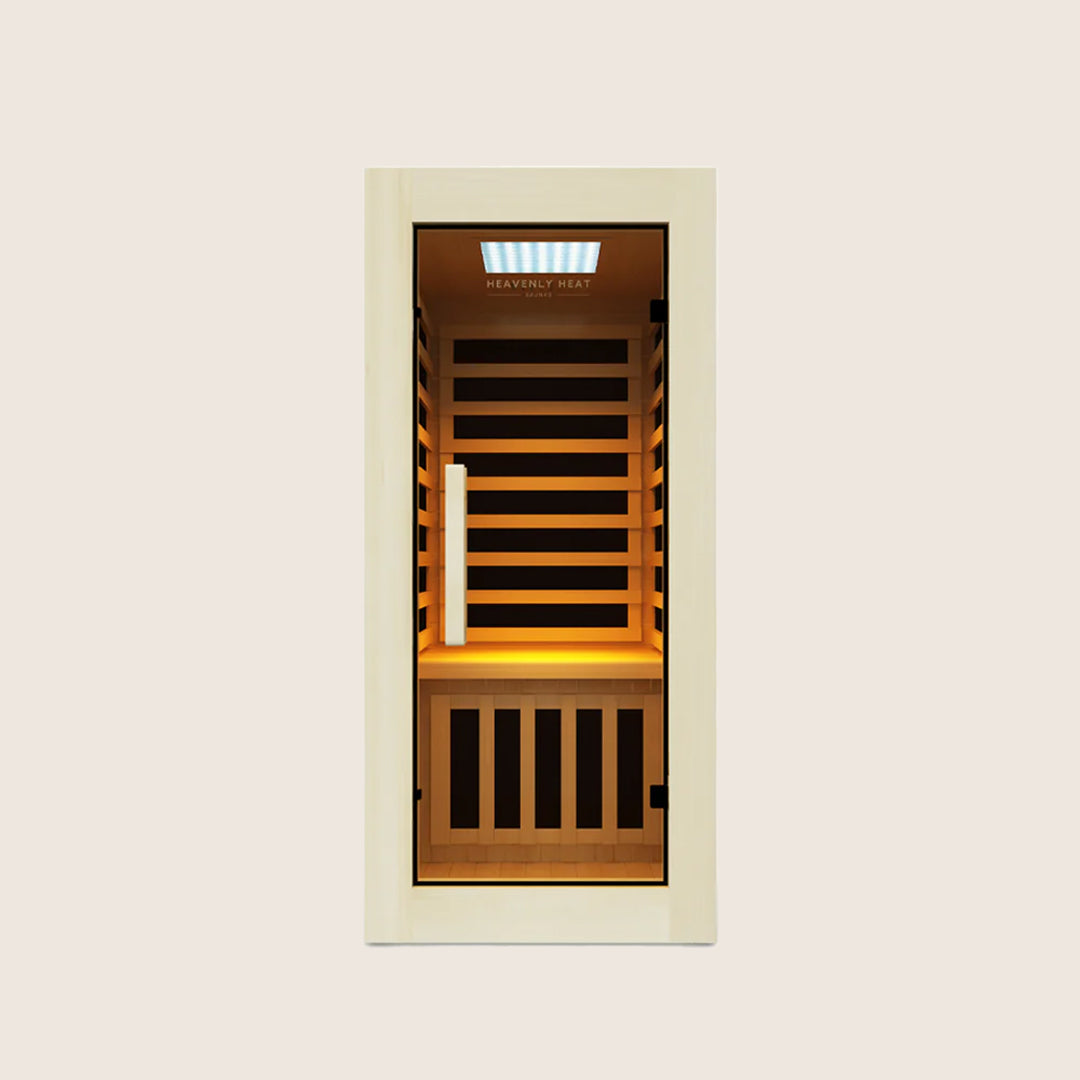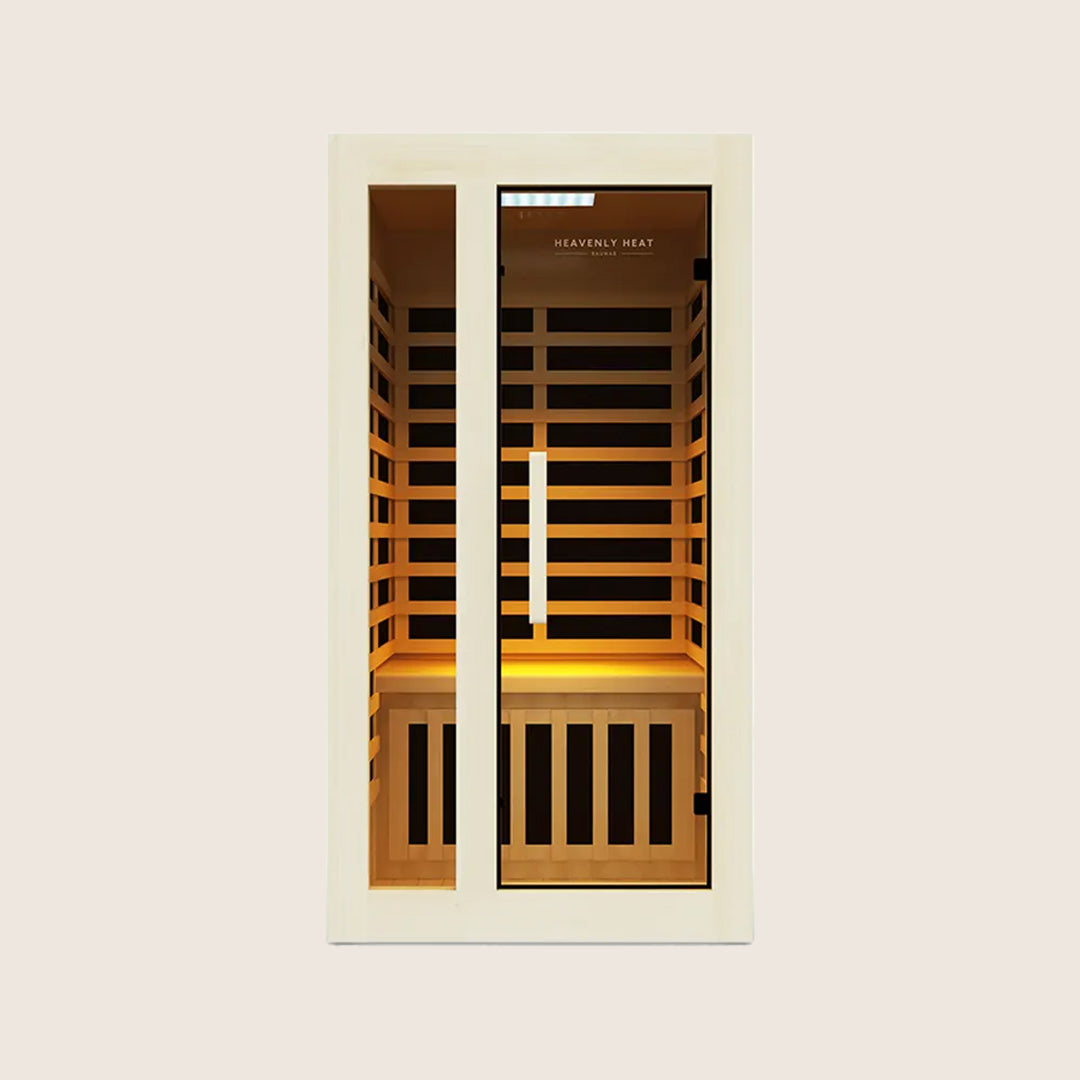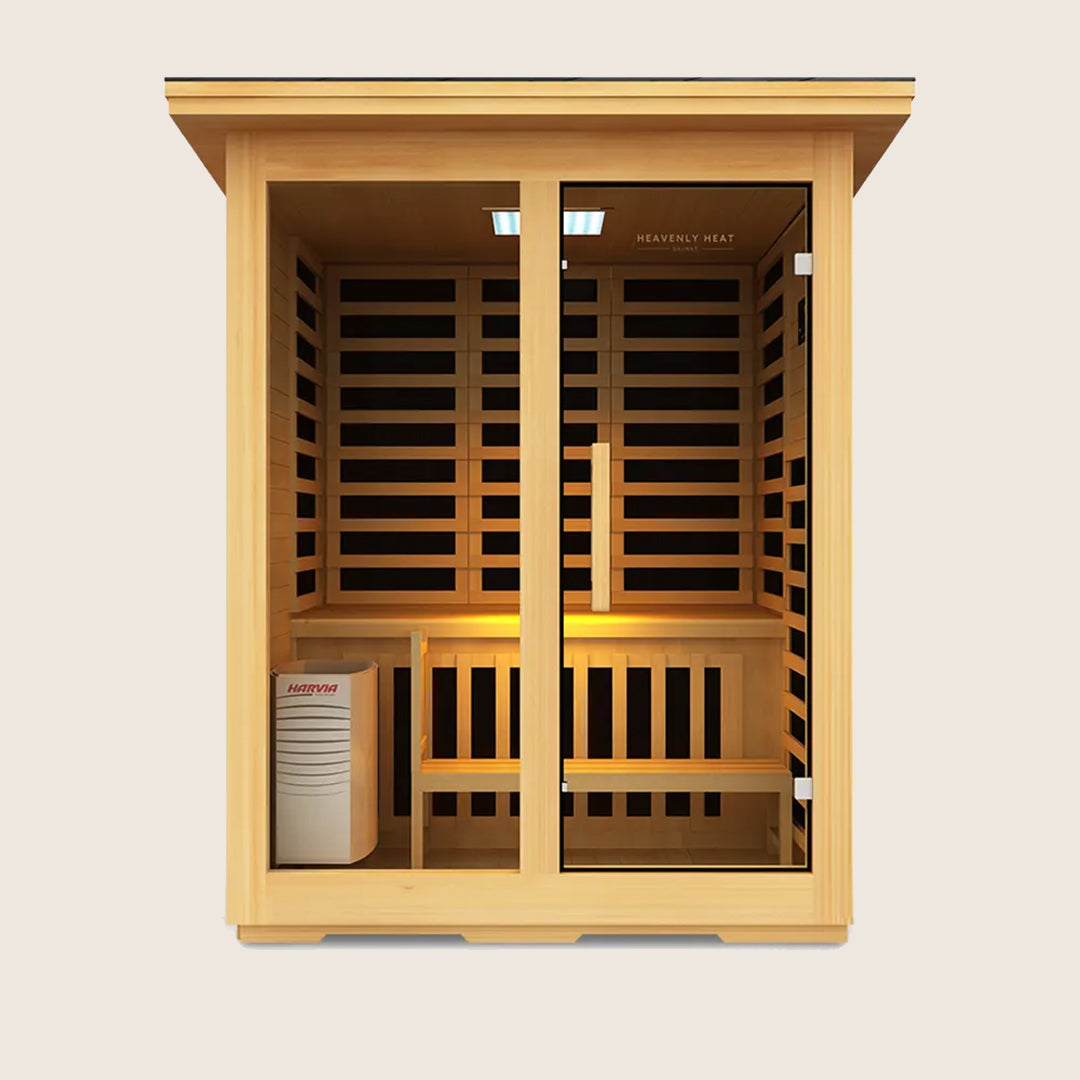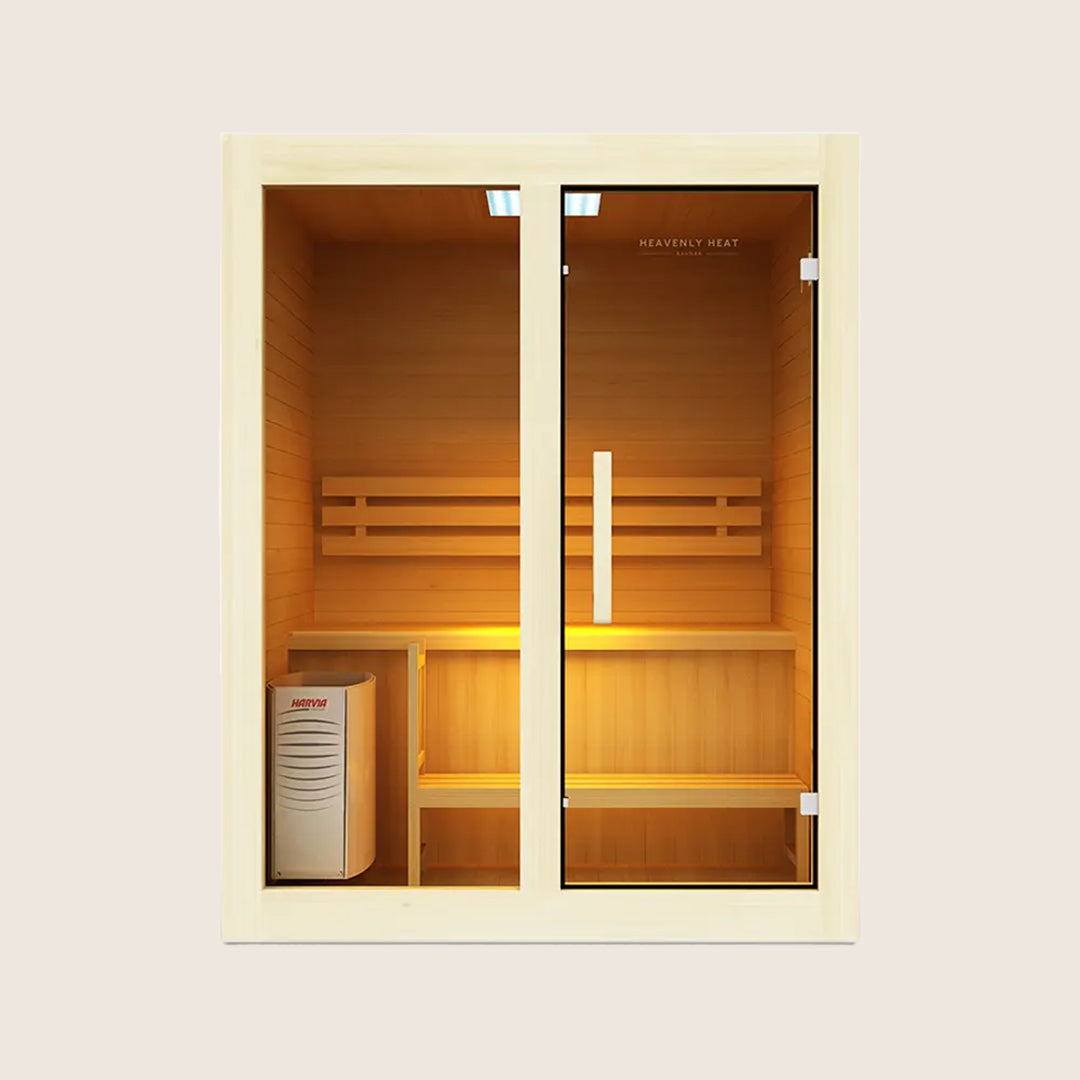Sauna Humidity Control: Achieve Optimal Moisture Levels
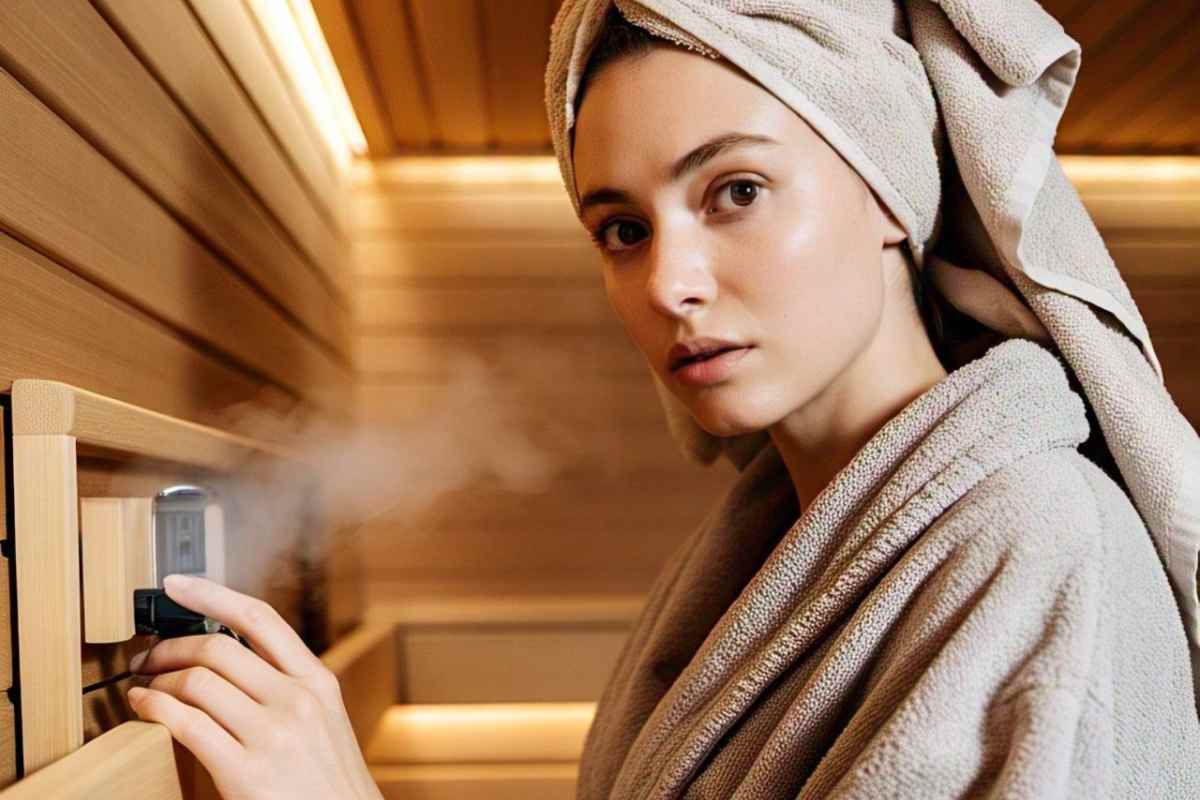
Too much or too little humidity can ruin your sauna experience. Excess moisture makes the air feel heavy and hard to breathe, while dry conditions can irritate your skin and throat.
Finding the right balance is key to relaxation and health benefits. In this guide, you’ll learn how to control sauna humidity for the perfect heat and comfort.
Table of contents
Key Takeaways
-
Adjust humidity levels by pouring water over sauna stones for a customized experience.
-
Dry saunas offer intense heat with low humidity, while wet saunas create a gentler warmth.
-
High humidity makes heat feel stronger, while low humidity allows sweat to evaporate faster.
-
A hygrometer helps monitor moisture levels to maintain sauna comfort.
-
Proper ventilation prevents excess moisture buildup and improves air circulation.
Introduction to Sauna Temperature and Humidity
- Sauna temperature and humidity work together for the perfect feel: The heat and moisture in a sauna must be balanced to create a safe and relaxing experience. When these two are managed well, your body can enjoy deep rest without discomfort or risk.
- Dry heat in traditional saunas gives a strong warming effect: In traditional saunas, the temperature runs high, between 150°F to 190°F, but humidity stays low at 10–20%. This makes the heat feel sharp and powerful, which many people enjoy for its intensity.
- Infrared saunas feel warm but stay gentle on the body: Infrared saunas use a lower temperature (120°F to 150°F) and have no humidity. They warm your body from the inside out, making the heat feel soft and less overwhelming compared to traditional ones.
- High moisture in steam saunas makes lower heat feel stronger: Steam saunas work with lower temperatures (110°F to 120°F), but the humidity is nearly 100%. Because of all the moisture in the air, the heat feels much stronger than it actually is.
- More humidity can make the heat feel hotter, even at lower temperatures: When the air is humid, your body feels the heat more quickly. That’s why steam saunas feel hotter than dry ones, even if the temperature is lower. Less moisture makes the heat feel cleaner and less intense.
- You can change the sauna’s humidity by adding water to the stones: If you want to adjust how humid the sauna feels, just pour water on the hot stones. This boosts the moisture in the air and lets you control the feel of the heat in real time.

Why Humidity Matters in a Sauna?
- Humidity decides how good or bad your sauna feels: Humidity controls the comfort level inside the sauna, it shapes how your body reacts to the heat.
- The right humidity can support a healthier heart: “proper sauna use, including balanced humidity, is linked to better heart health and longer life,”says Dr. Jari Laukkanen , a cardiologist and researcher specializing in sauna health benefits.
- Balanced humidity helps your body sweat the right way: When humidity is just right, your body sweats better, helping flush out toxins while keeping you comfortable.
- Dry or steamy humidity changes how your body feels heat: Steam saunas with high humidity and dry saunas with low humidity make your body respond very differently to heat.
- Adjusting humidity based on heat makes the sauna safer: Using the Rule of 200 helps you balance heat and humidity to avoid feeling dizzy, dehydrated, or overwhelmed.
- Too much or too little humidity can spoil your session: If it’s too humid, it gets hard to breathe. If it’s too dry, your skin and throat may feel irritated. Balance is key.
- The right humidity makes the sauna more relaxing: Good humidity helps you breathe deeply, improves blood flow, and makes the sauna feel more refreshing and enjoyable.
Dry vs. Wet Saunas: What’s the Difference?
- Dry saunas feel hotter because the air has little moisture: Dry saunas use heated stones to warm the air while keeping humidity very low (around 10–20%). This dry environment makes the heat feel much more intense, causing your body to sweat more quickly.
- Wet saunas feel softer because the air is full of steam: In a wet sauna or steam room, the air is filled with nearly 100% humidity. This heavy moisture makes the heat feel gentler, as if you're wrapped in warm mist.
- The main difference is how your body feels the heat: Dry saunas give a strong, deep heat that hits fast. Wet saunas provide a slower, softer heat that surrounds your body. Both help you relax and sweat, but the feeling is completely different.
Feature |
Dry Sauna |
Wet Sauna (Steam Room) |
| Humidity Level | 10-20% | 90-100% |
| Heat Sensation | Feels hotter due to dry air | Feels milder due to moisture |
| Sweat Evaporation | Fast | Slow |
| Breathing Comfort | Can feel harsh | Feels soothing but heavy |
| Health Benefits | Detox, muscle relaxation | Skin hydration, respiratory relief |
How Humidity Changes the Way You Feel Heat?
- When the air is humid, heat feels much stronger: Humidity makes hot air feel hotter because your sweat doesn’t dry off easily, which traps the heat on your skin .
- Sticky sweat means your body can’t cool down: In humid conditions, sweat stays on your skin instead of evaporating. This stops your body from cooling itself and makes you feel even warmer.
- A steam sauna can feel hotter than a dry one, even at lower temperature: Because of high humidity, a steam sauna at 120°F can feel more intense than a dry sauna at 160°F. The moist air adds to the heat sensation.
- Dry air helps sweat do its job and cool you down: In low humidity, sweat evaporates quickly, which cools your body and makes the heat feel less harsh.
- Airflow helps control the heavy feeling of humidity: Good ventilation helps balance the moisture in the air, making it easier to breathe and more comfortable overall.
- Getting the right mix of heat and humidity makes all the difference: When you understand how humidity works, you can adjust it to feel just the right amount of heat without being overwhelmed.

The Link Between Humidity and Sweating
- When the air is humid, your sweat stays on your skin: Humidity makes it harder for sweat to evaporate. In a sauna with high moisture in the air, sweat just stays on your skin, making you feel soaked and hot very quickly.
- Dry saunas help your body stay cooler: In a dry sauna, the sweat dries off faster, which cools the body better and helps you stay more comfortable.
- After being in humidity, your body keeps sweating: Even after you leave a humid place or finish exercising, your body continues to sweat more. That’s how strong humidity’s effect can be on your body.
- Too much humidity makes your body heat up faster: If the air is too moist, sweat stops cooling you down. This can make you overheat, feel dizzy, and sweat way more than normal, which can be risky if ignored.
How to Measure and Monitor Sauna Humidity?
- A hygrometer helps you control sauna humidity effectively: To keep the sauna atmosphere balanced and safe, a hygrometer is necessary, as it accurately measures the moisture level inside the room.
- Digital models give clearer, more precise humidity readings: Although analog hygrometers can work well, digital ones offer more accurate and easier-to-read results, which is helpful for ongoing monitoring.
- Sauna humidity stays low but can briefly rise with steam: The typical humidity range in a sauna is between 5–10%. This may rise temporarily when water is poured over the stones, increasing the steam and sensation.
- Wrong placement of the hygrometer can give false results: Placing the hygrometer too close to the heater or too low on the wall often leads to incorrect readings. Mounting it at eye level, away from direct heat, improves accuracy.
- Calibrating your hygrometer keeps it working right: If you want reliable humidity readings over time, it’s important to compare your device to a trusted one and make adjustments when needed.
- Checking humidity regularly makes your sauna more comfortable: Monitoring humidity on a regular basis ensures that the sauna remains pleasant, effective, and safe for consistent use.

Best Tools to Control and Adjust Humidity Levels in sauna
Hygrometers for Accurate Humidity Monitoring
- A hygrometer shows you the exact humidity in your sauna: A hygrometer helps you know how much moisture is in the air, so you can keep the sauna comfortable and safe to use.
- Without checking humidity, the sauna can feel wrong or even harm health: If you don’t measure humidity, your sauna might become too dry or too humid, making your sessions uncomfortable and possibly leading to mold or breathing issues.
- A good hygrometer should handle heat and not let air in: Choose a hygrometer made with heat-resistant glass and a tightly sealed body so it works well even in high sauna temperatures.
- Where you place the hygrometer affects how well it works: To get the most accurate humidity readings, place the hygrometer on the wall opposite the heater. This avoids false readings caused by direct heat.
Dehumidifiers for Excess Moisture Control
Excess moisture can lead to mold, mildew, and a damp atmosphere. A dehumidifier helps by pulling excess water from the air, improving air quality.
Choose a compact, heat-resistant model with automatic shutoff features. Running it after sessions prevents humidity buildup, prolonging your sauna’s lifespan.
Humidifiers to Maintain Optimal Sauna Conditions
If your sauna feels too dry, a humidifier can help. Steam-based or ultrasonic models work well, providing controlled moisture.
Portable or wall-mounted options allow flexibility. Adjustable settings let you fine-tune humidity levels, preventing dryness while enhancing relaxation.
Ventilation Systems for Proper Air Circulation
- Good ventilation stops the sauna from feeling too wet or stuffy: Good airflow prevents excessive moisture buildup, keeping the air fresh. A balanced ventilation system improves heat distribution, speeds up warm-up time, and maintains consistent humidity for a more comfortable sauna experience.
- Placing vents near the floor and ceiling helps air move smoothly: A proper ventilation system includes intake and exhaust vents placed near the floor and ceiling for steady air movement.
- Heat can move air naturally or with the help of a fan: Natural draught ventilation uses rising heat to move air, while forced air ventilation relies on an electric fan for even temperatures.
- Putting vents in the right spot helps spread heat evenly: Proper vent placement, such as intake near the heater and an adjustable outflow vent, optimizes heat circulation and prevents temperature imbalances.
- Blocked or broken vents can mess up airflow and comfort: Clogged vents or faulty systems stop proper air movement, making the sauna less effective and less comfortable.
Sauna Stones and Water for Natural Humidity Adjustment
Pouring water over sauna stones regulates humidity by creating steam. Small splashes keep the air mild, while larger amounts intensify moisture.
However, too much water can temporarily cool the stones. Always use high-quality stones to avoid cracking from temperature changes.
Essential Oils and Steam for Enhanced Humidity Control
Adding essential oils to sauna steam enhances both aroma and moisture. Scents like eucalyptus and lavender create a therapeutic atmosphere.
To use them effectively, mix a few drops into water before pouring over sauna stones. The ideal humidity level for an aromatic sauna experience is around 40%-60%.
Smart Controls for Automated Humidity Regulation
Smart sauna controls automate humidity management, ensuring a consistently comfortable experience.
Some systems integrate with temperature controls and smartphone apps, allowing remote adjustments.
When choosing a smart controller, look for programmable settings and real-time tracking.
Does Adding Water to Sauna Stones Increase Humidity?
Yes, pouring water on sauna stones instantly increases humidity by creating steam. The heat feels more intense as moisture carries warmth effectively.
However, adding too much water at once can overwhelm the stones and cool the heater.
The humidity rises quickly, so adding water in small amounts ensures steady steam without shocking the system.
How to Control Humidity in Your Sauna?
Proper Ventilation and Air Circulation
Ventilation prevents moisture buildup, keeping the sauna comfortable. Both intake and exhaust vents allow fresh air in and moist air out. The ideal air exchange rate is around 1-2 air changes per hour.
Using a Dehumidifier for Moisture Control
A dehumidifier helps reduce excess moisture, making the environment more comfortable. The best models for saunas are compact and heat-resistant. Using a dehumidifier after your sauna session prevents humidity buildup and mold.
Choosing the Right Sauna Materials
Different wood materials affect humidity control. Water-resistant woods like cedar prevent excess moisture buildup, reducing the risk of mold. Sauna benches and walls should generally be untreated for better air circulation.
Maintaining Optimal Temperature Balance
Humidity and temperature are closely connected. Moisture makes heat feel stronger, so adjusting water usage can fine-tune comfort. Sauna rocks absorb and release moisture to maintain steady heat.
Utilizing Sauna-Specific Humidity Sensors
Humidity sensors track moisture levels for precise control. Placed near the ceiling, these sensors provide accurate readings. Advanced systems integrate with sauna controls for automated adjustments.
Effective Cleaning and Moisture Prevention
Prevent mold by wiping down walls and benches after each session. Open the door for airflow and ensure no standing water remains on the rocks. A well-maintained sauna stays fresh and comfortable.
Strategic Water Usage for Humidity Regulation
Watering sauna rocks affects humidity. Adding water creates steam, enhancing the sauna experience. However, too much water at once can make the air overly thick. Pour small amounts gradually for steady moisture control.
FAQs
How does sauna humidity affect skin health and hydration during use?
Sauna humidity helps lock in moisture, making the skin softer and more hydrated. It benefits dry skin by soothing and reducing flakiness. The moist air opens pores, aiding in toxin release and reducing acne. It also calms inflammation, improving skin appearance. After a session, humidity prevents dehydration, keeping the skin refreshed.
Can sauna humidity levels impact respiratory health during a session?
Sauna humidity affects breathing comfort. High humidity can open airways and ease congestion but may feel heavy for sensitive lungs. Dry saunas can cause throat and nasal irritation, leading to discomfort. Extreme humidity levels, whether high or low, can worsen lung conditions.
What is the ideal humidity level for sauna users with sensitive skin or allergies?
The ideal sauna humidity for sensitive skin and allergies is 30%–50%. Excess moisture can cause irritation, while low humidity dries out the skin. Steam saunas soothe dry skin but may worsen allergies due to mold. Infrared saunas, with lower humidity, are often better for sensitive skin. Adjusting humidity based on comfort helps prevent reactions.
How does the humidity in a sauna interact with the body’s natural sweat response, and what does this mean for detoxification?
Sauna humidity affects sweating and detoxification. High humidity prevents sweat evaporation, making the body feel hotter and intensifying sweating, but excessive moisture can hinder cooling. Low humidity allows faster evaporation, creating a drier heat. Balanced humidity supports sweating and toxin removal without causing discomfort.


